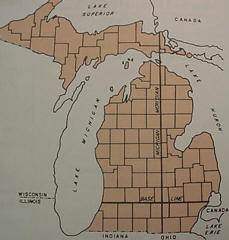

Such offsets were set up along standard parallels, or correction lines, that were established every 30 miles south of the baseline. Consequently, the range lines must be offset periodically to preserve the 6-mile by 6-mile configuration of the townships otherwise, townships would be considerably narrower in the northern part of the state than in the southern part. 43 W.īecause the surface of the earth is curved, parallels of longitude, and thus north-south survey meridians in the U.S., converge toward the north. 25 E., and the one in the southwest corner of the state is T.

The township in the southeast corner of the state is T. 1 E.), whereas the one just west of the principal meridian is T. Thus, for example, the first township east of the principal meridian and next to the Nebraska border is Township 1 South, Range 1 East (T. Ranges are numbered east and west from the Sixth Principal Meridian-the east ranges are numbered from 1 to 25 to the Missouri border, and the west ranges from 1 to 43 to the Colorado border. In Kansas, the townships are numbered 1 to 35 sequentially from the baseline at approximately 40° North latitude (the state line bordering Nebraska) southward to the Oklahoma border (fig. Townships are designated by both a township and a range number. They are bounded on the north and south by township lines and on the east and west by range lines. Normally, townships are approximately 6 miles on a side. Kansas Geological Survey, Public Information Circular (PIC) 20Ī township is a basic unit of land within the PLSS.


 0 kommentar(er)
0 kommentar(er)
